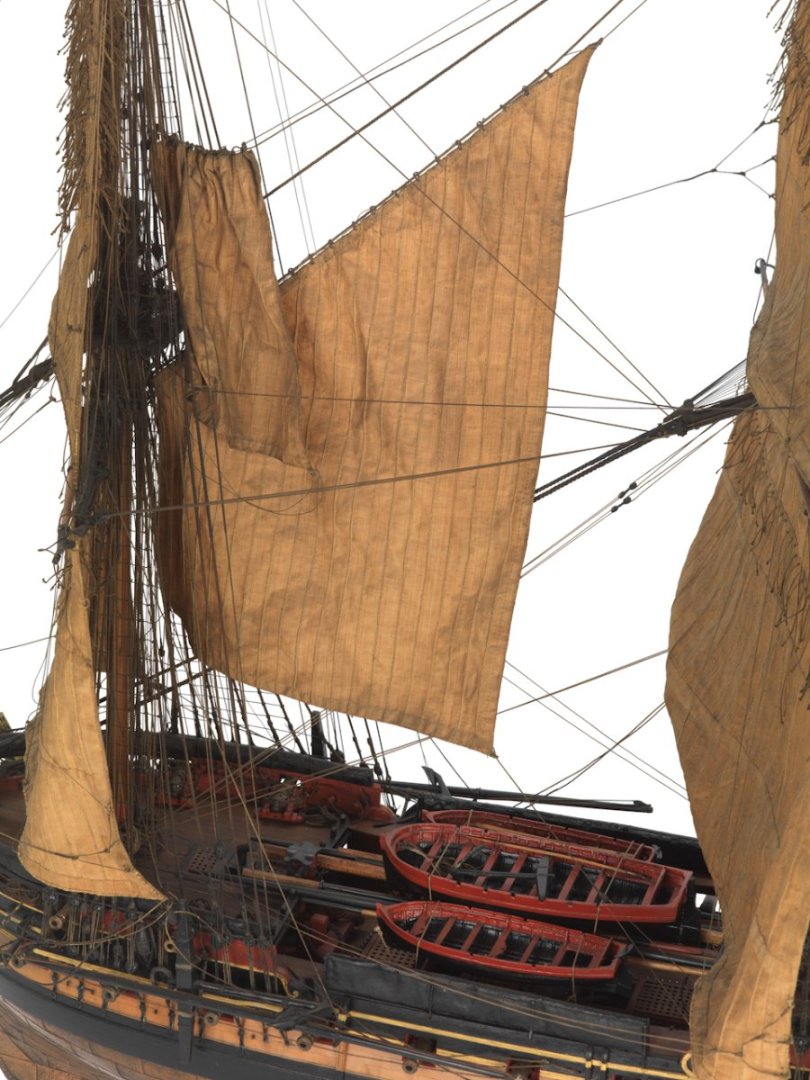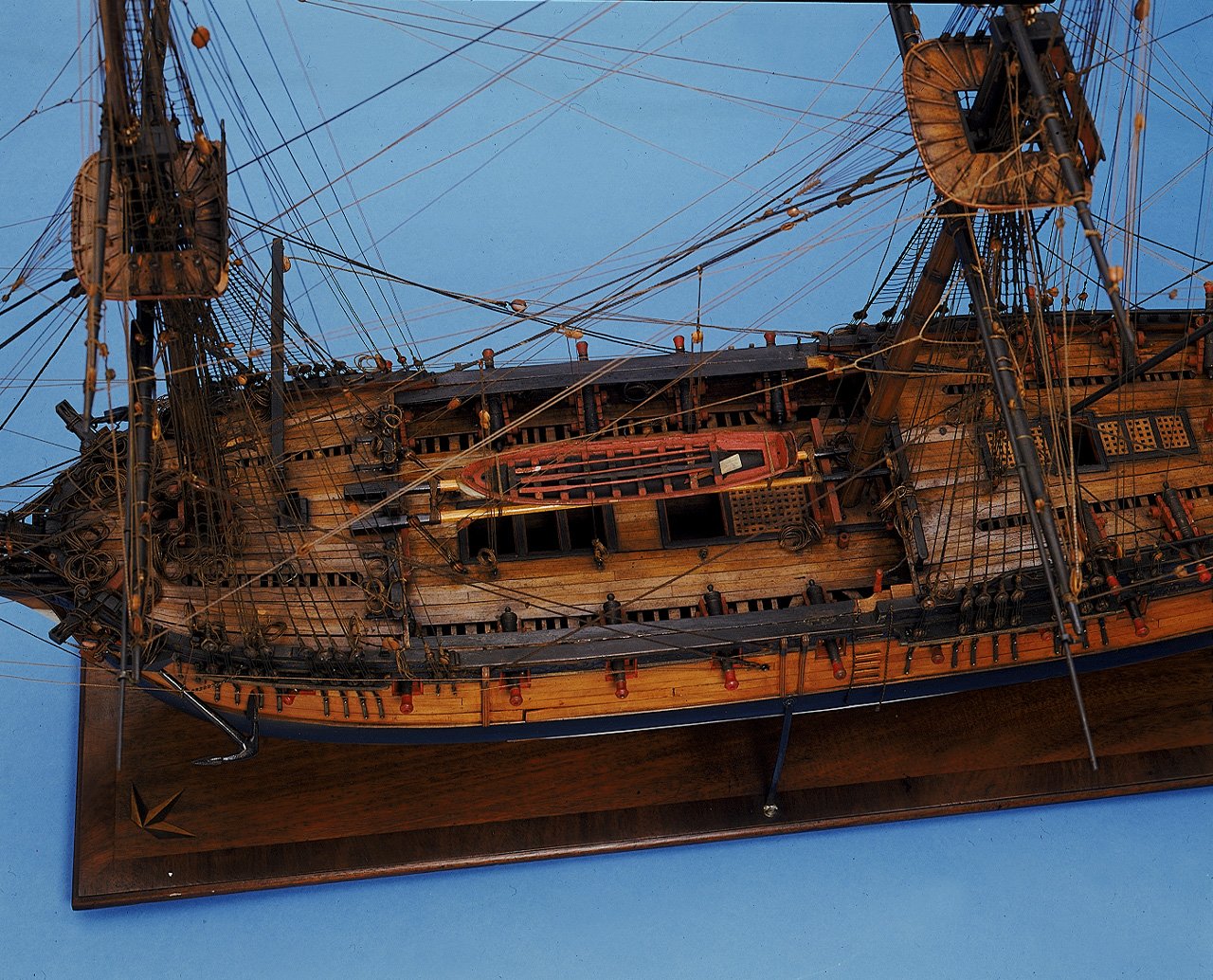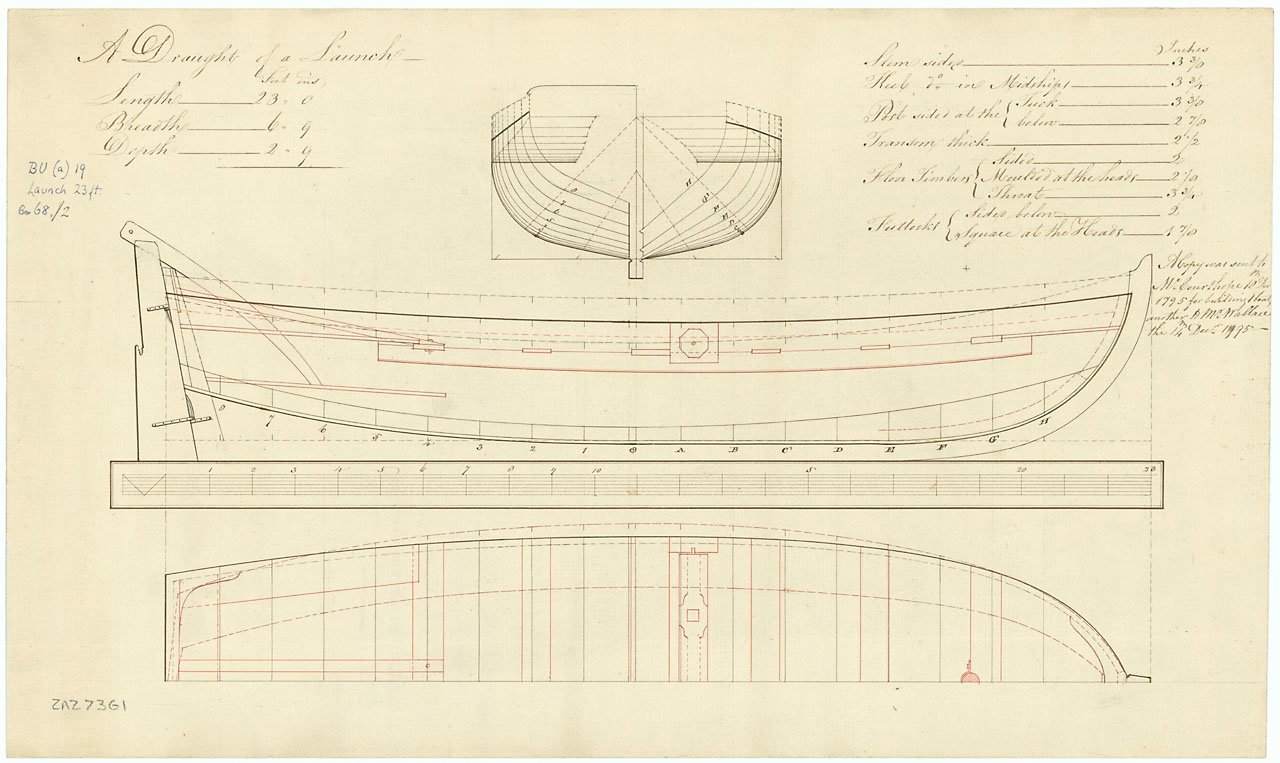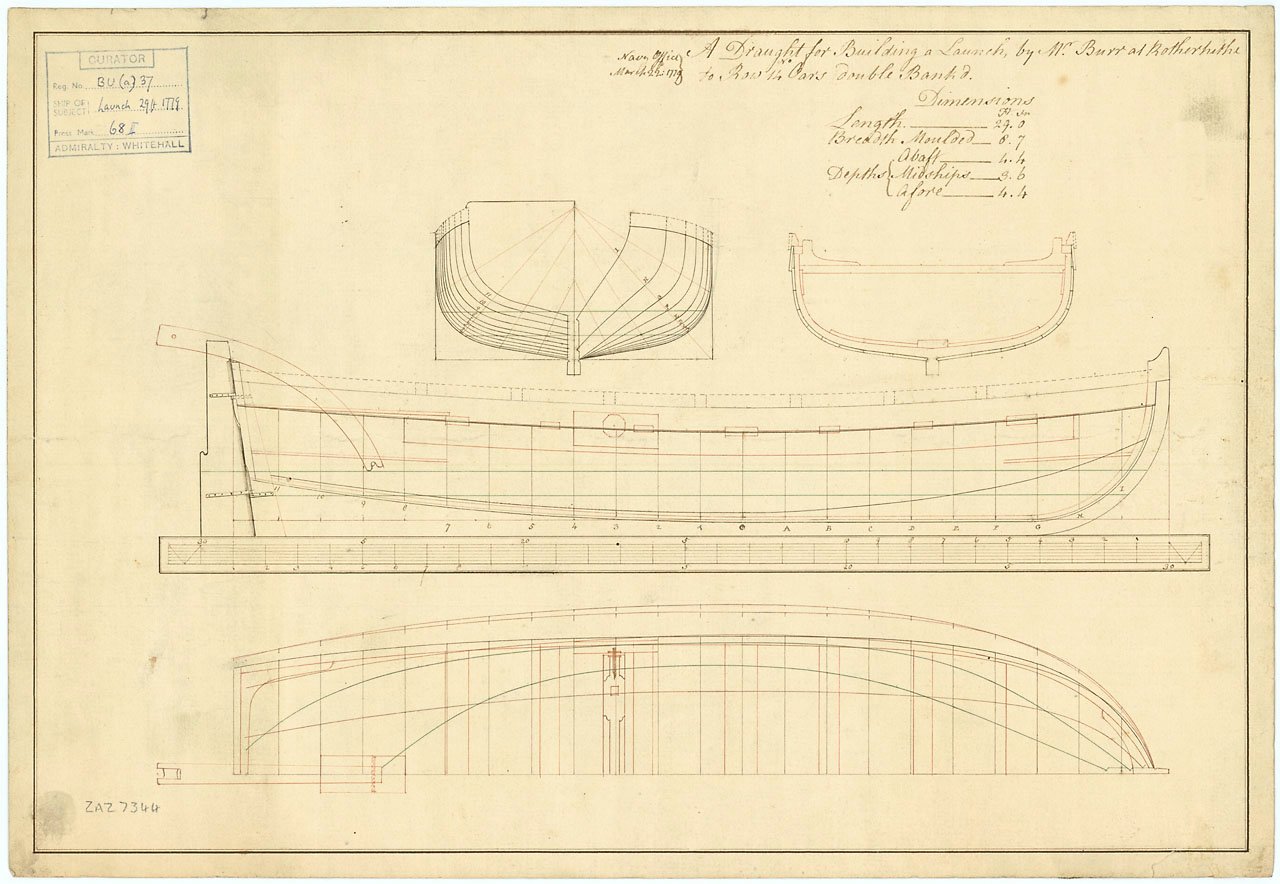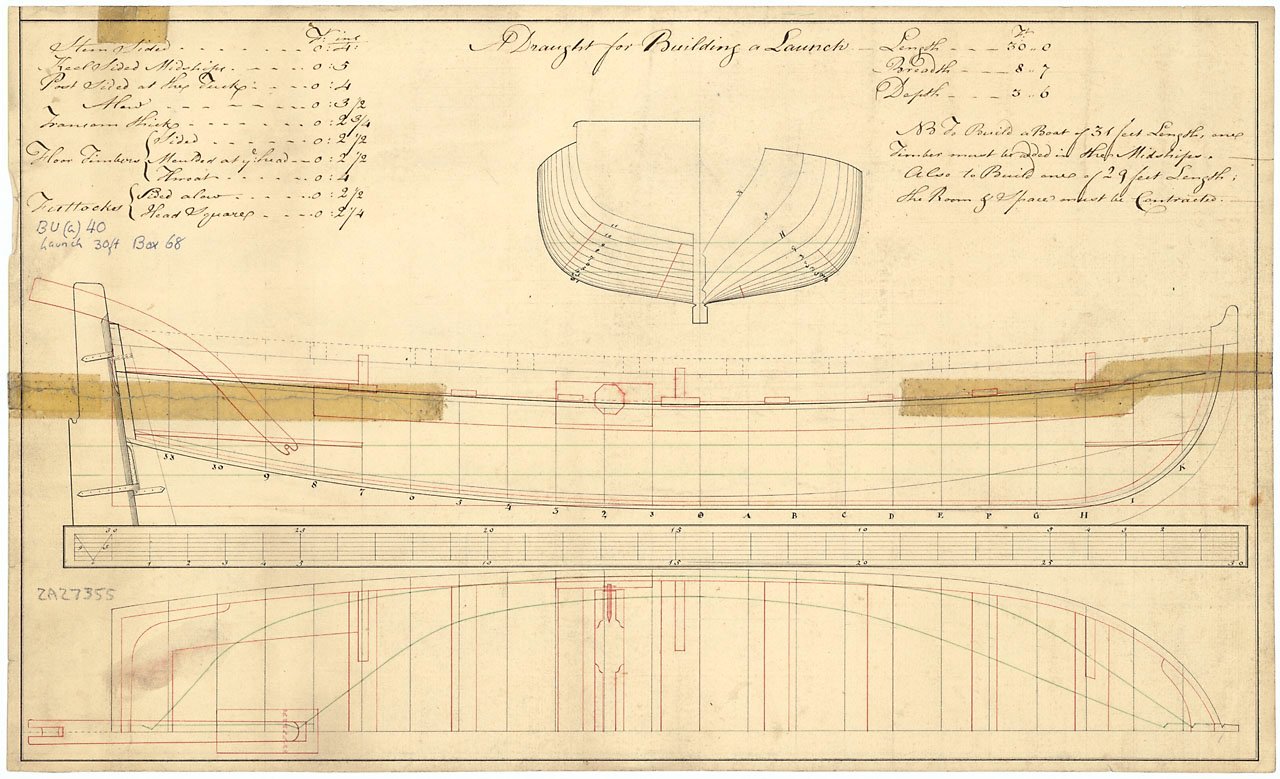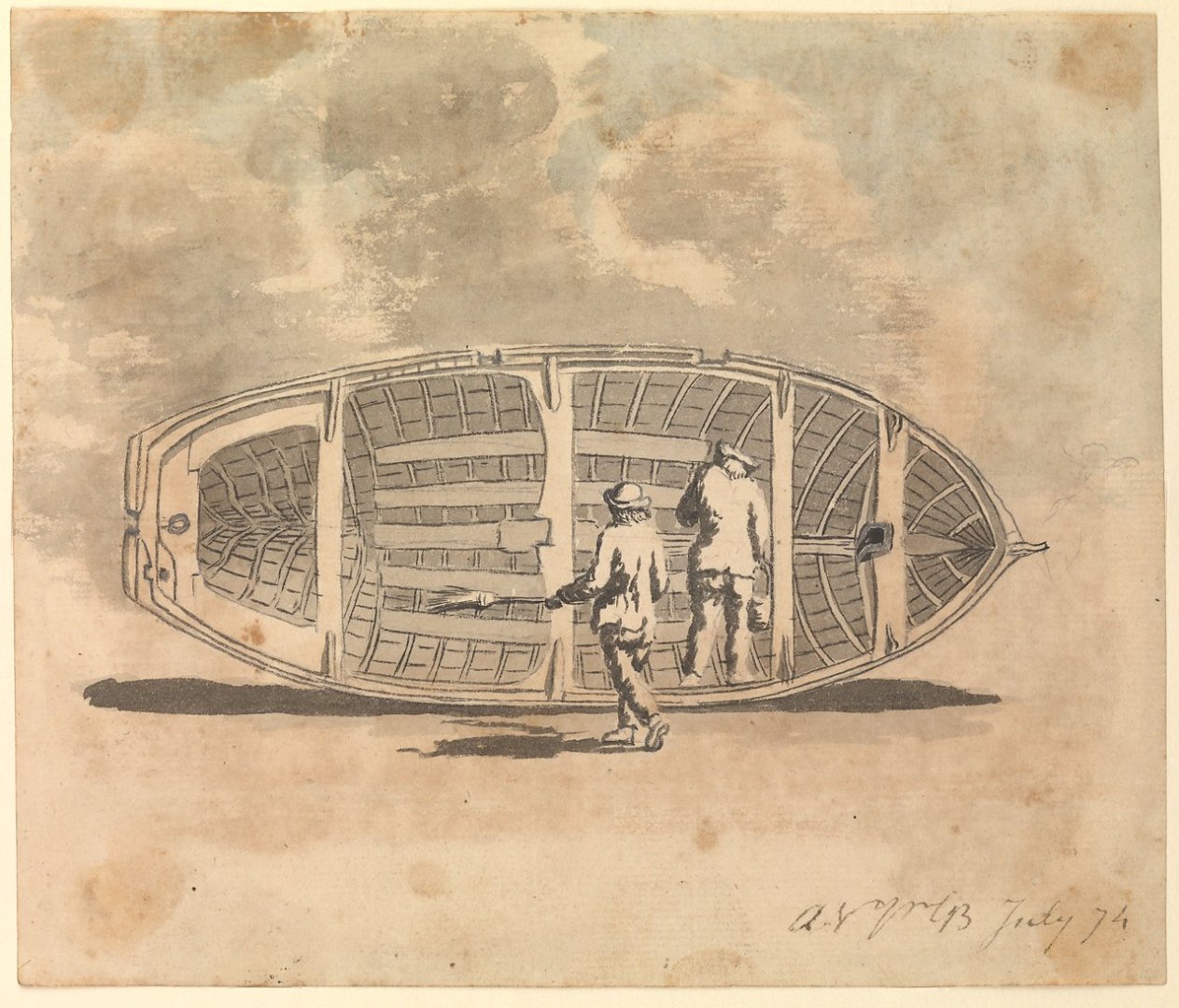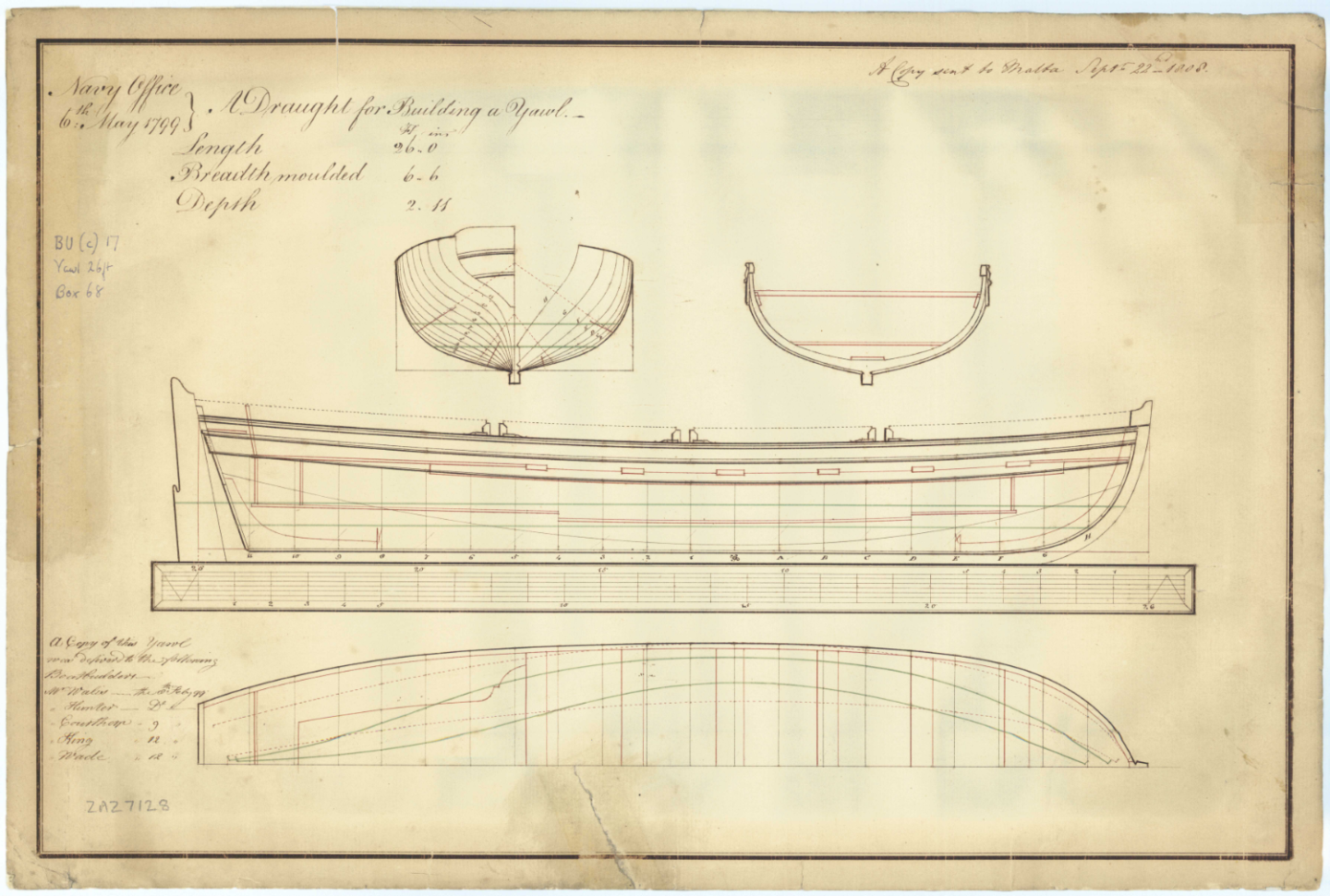-
Posts
8,137 -
Joined
-
Last visited
Content Type
Profiles
Forums
Gallery
Events
Everything posted by allanyed
-
If you study the tutorials mentioned above and some of the many build logs here at MSW you will see there is no need for nails and all the problems that come with using them. Allan
- 21 replies
-
PCA Belated welcome to MSW!!! Have you studied the tutorials here on proper planking techniques? If you take some time to study the article by David Antscherl in the articles data base here at MSW and the Youtube videos on the internet on planking by Chuck Passaro, both of whom are expert model builders and members here, you will learn a lot that will carry forward. You mention white glue. Maybe consider yellow PVA (carpenter's glue) White glue may not be the best choice. Allan
- 21 replies
-
Success (of sorts)!! The following contemporary photo of a 38 gun frigate of 1805 and the second photo of the Lowenstat (32) 1761 show no signs of blocks or deadeyes. I agree, deadeyes seem like overkill. There are probably more on the RMG site but using it is not as user friendly as in the old days, at least not for some of us.😕
-
Nice work all around Dave. You model brings up a question that I don't think has been answered before, based on contemporary information. You show 8 deadeyes to secure the lines holding the upper tier of ship's boats in place as well as a simple tie down for the lowest. Were deadeyes, blocks, or just ropes and eyes with a simple tie down normally used? I have seen a number of photos of contemporary models showing boats but only one so far that has ropes holding the boats in place and that is a simple tie down much like what you used for the lowest boat. I have no idea what the usual method was, but would like to know for future use. Thanks for sharing your build! Regarding Diana, all those different types and sizes of boats will be fun projects in themselves!! Allan
-
Amongst the nicest gratings ever posted at MSW. Very well done!! I am not familiar with Pegasus, but do the corners of the coamings and head ledges get rounded above the top of the deck line? Enjoying following your build, thanks for sharing. Allan
- 885 replies
-

Sergal HMS Bounty.
allanyed replied to mark j's topic in Building, Framing, Planking and plating a ships hull and deck
As this is your first build, maybe consider setting it aside for the time being and start with something that will teach you the basics that will carry forward with more complex projects. There is a lot of agreement here at MSW that one of the very best starter series is the three boat set designed by David Antscherl available at Model Shipways. Your choice of course, but something you may want to consider. Too many folks new to the hobby start with a kit that is too complex for their experience and they sometimes give up the model and hobby as a result. Fear not, we have all failed at times in this hobby of ours. Learning from our own mistakes is a huge part of the hobby. And don't be afraid to spend as much time researching your ship as you do making sawdust, including reading the many fine pieces in the Articles Database here at MSW. Allan -
Welcome aboard and thank you for sharing your build with us. Excellent start! Allan
-
Hi Gregory Unfortunately this does not apply to this model as it is based on RMG plan ZAZ7361, or most, if not all, launch plans for that matter. I made this mistake on my first attempt at this model and scrapped it when I realized it was totally wrong for this particular boat if based on the body plan. This plan and two other launch plans follow as examples. Allan
-

EURYALUS 1803 by Peter6172 - 1:48
allanyed replied to Peter6172's topic in - Build logs for subjects built 1801 - 1850
Hi Gary. Go to the subject below. As it turns out it there was a typo on my part when transcribing the Euryalus contract as you and I recently discussed separately. modelshipworld.com/topic/33732-tuning-copper-sheathing Allan -
At the time Bray was on the Pallas (36) in 1774, IF she prescribed to the 1745 Establishment for a 36 gun frigate she would have carried three boats, 23 foot longboat, 30 foot pinnnace, and 24 foot yawl. (W.E. May, The Boats of Men of War, p.56) Are the boats in the two drawings by Lt. Bray the same boat and are they the yawl or the longboat? Anyway, I think this is going off track, albeit very interesting, and hopefully gave the info Alan needed to start with. Allan
- 24 replies
-
- Small boats
- cutter
-
(and 2 more)
Tagged with:
-
Roger, Sometimes the research is as much, or sometimes, more fun than the build when something like this pops up with the little details like the forward step that you mentioned. Allan
- 24 replies
-
- Small boats
- cutter
-
(and 2 more)
Tagged with:
-
There is no doubt that the term jolly boat refers to the smallest of the ships' boats and whether they were cutters or some other design seems to always be up for debate. Looking at books by Lavery and May they both refer to jolly boats. May gives scantlings for all types of boats for 1705 and 1800 but nowhere is there a jolly boat listed with scantlings. Lavery goes into some detail about what they were on page 223 of The Aming and Fitting of English Ships of War. He writes that jolly boats appeared to be cutters of 16 to 18 feet and one authority said that four oared cutters were called jolly boats. In doing a little digging I found the following drawing called Seamen Painting a Jolly Boat by Lt. Gabriel Bray of the Pallas which he did in 1774. It looks like a four oared cutter to me but I may be dead wrong. Allan
- 24 replies
-
- Small boats
- cutter
-
(and 2 more)
Tagged with:
-

Tuning Copper sheathing
allanyed replied to allanyed's topic in Building, Framing, Planking and plating a ships hull and deck
THANK YOU BRUCE!!! It turns out it was a typo on my part afterall. Cheers Allan -
Starting to get into the rigging. There is not a lot of information on rigging these boats but enough to get started. I have opted for loose footed sails and rigged as follows, SO FAR. Any details that are based on contemporary sources, be it text, models, replicas and drawings would be most welcome! Starting point is below. The first question concerns the cleats. Is this what would have been used for the tacks and clues, and if yes would there be one port and one starboard for each sail? I may have mislabled the below, but based it on the following from Steels, Elements and Practice of Rigging In triangular sails, and in quadrilateral ones, where the head is not parallel to the foot, the foremost corner at the foot is called the tack; the after lower corner, the clue Second question, are parrels appropriate? I have seen photos of contemporary models with quadrilateral sails but none of them have parrels that I can recall. To paraphrase Paul Simon, still <learning> after all these years...... Allan
-
They are a bit out of scale fore and aft when I compare to the plan we have been using most of the time. I still do not think, and may be wrong, that the knee ends as you show it in the athwartship direction. Using 7361 it shows the knees coming to a point which I have never seen before. I think, as with the benches, there may be drawing lines in error. ZAZ7355 and ZAZ 5814 are much more clear, albeit completely different. Thanks guys, much appreciated Allan
-
Actually I think we ALL get enjoyment or would not be so keen on our hobby so I believe you are in a majority. After all, why bother if we are not enjoying what we are doing. We all have different desires and priorities of what to include in any build on which we embark, but none are wrong, just different. Allan
-
My priorities have usually been as-built drawings, contract, design drawings (as you are using) and scantlings in that order if based on the Shipbuilder's Repository, Elements and Practice of Naval Architecture and The Boats of Men of War. If the time period is covered by scantlings found in the 1719, 1745. or 1750 Establishments I would put the scantlings ahead of the design drawings. It is more often than not a combination, but still keeping those priorities in mind where there is a conflict of information. The scantlings I listed in my launch build log are based on the same drawing you mention, where available, and those found in The Boats of Men of War where dimensions are not available or if the parts are not shown such as the ears, gunwale and knees to name a few. Allan
-
Everything Roger and Jaager said times 100. They are absolutely correct and you would be wasting your money IF realism is an important part of this hobby for you. Personal tastes comes into play so realism is not the same priority for every builder. It is after all, a hobby. I am in the same boat with Roger and Jaager, so would emphasize there is no cloth or method of sewing a sail at 1:60 scale in existence that will look remotely realistic. If you must have sails there is an excellent and inexpensive booklet on sail making using silk span by David Antscherl available from SeaWatch books. https://seawatchbooks.com/products/swan-iv-sail-making-supplement-from-the-revised-and-expanded-edition-by-david-antscherl Allan
-
Dick, Just tuned in and wanted to go a step past the "like" button. You obviously love the research as well as the building and I would agree that it can be as fulfilling as making sawdust. Excellent presentation, thank you very much for sharing. Allan
- 130 replies
About us
Modelshipworld - Advancing Ship Modeling through Research
SSL Secured
Your security is important for us so this Website is SSL-Secured
NRG Mailing Address
Nautical Research Guild
237 South Lincoln Street
Westmont IL, 60559-1917
Model Ship World ® and the MSW logo are Registered Trademarks, and belong to the Nautical Research Guild (United States Patent and Trademark Office: No. 6,929,264 & No. 6,929,274, registered Dec. 20, 2022)
Helpful Links
About the NRG
If you enjoy building ship models that are historically accurate as well as beautiful, then The Nautical Research Guild (NRG) is just right for you.
The Guild is a non-profit educational organization whose mission is to “Advance Ship Modeling Through Research”. We provide support to our members in their efforts to raise the quality of their model ships.
The Nautical Research Guild has published our world-renowned quarterly magazine, The Nautical Research Journal, since 1955. The pages of the Journal are full of articles by accomplished ship modelers who show you how they create those exquisite details on their models, and by maritime historians who show you the correct details to build. The Journal is available in both print and digital editions. Go to the NRG web site (www.thenrg.org) to download a complimentary digital copy of the Journal. The NRG also publishes plan sets, books and compilations of back issues of the Journal and the former Ships in Scale and Model Ship Builder magazines.



